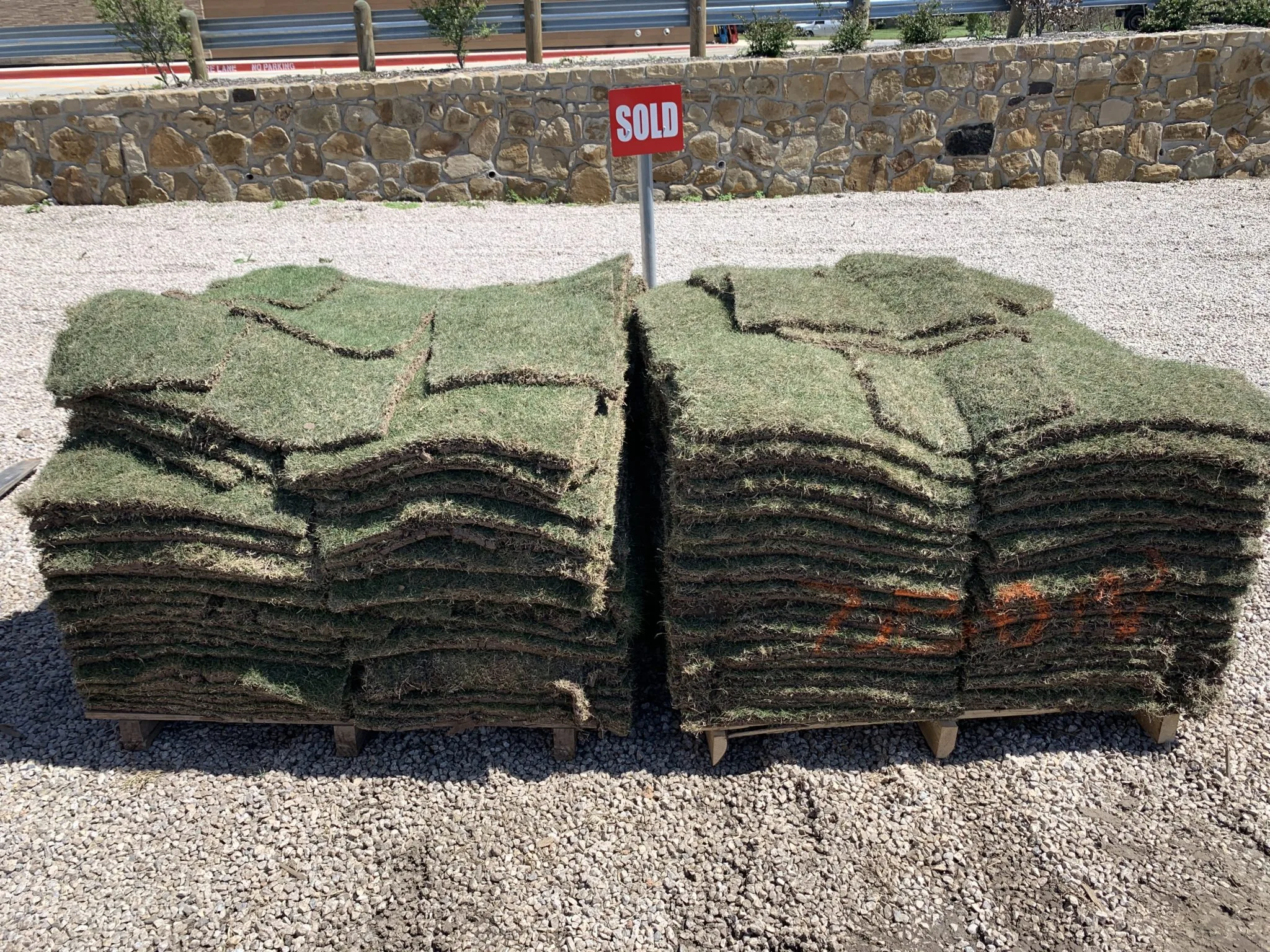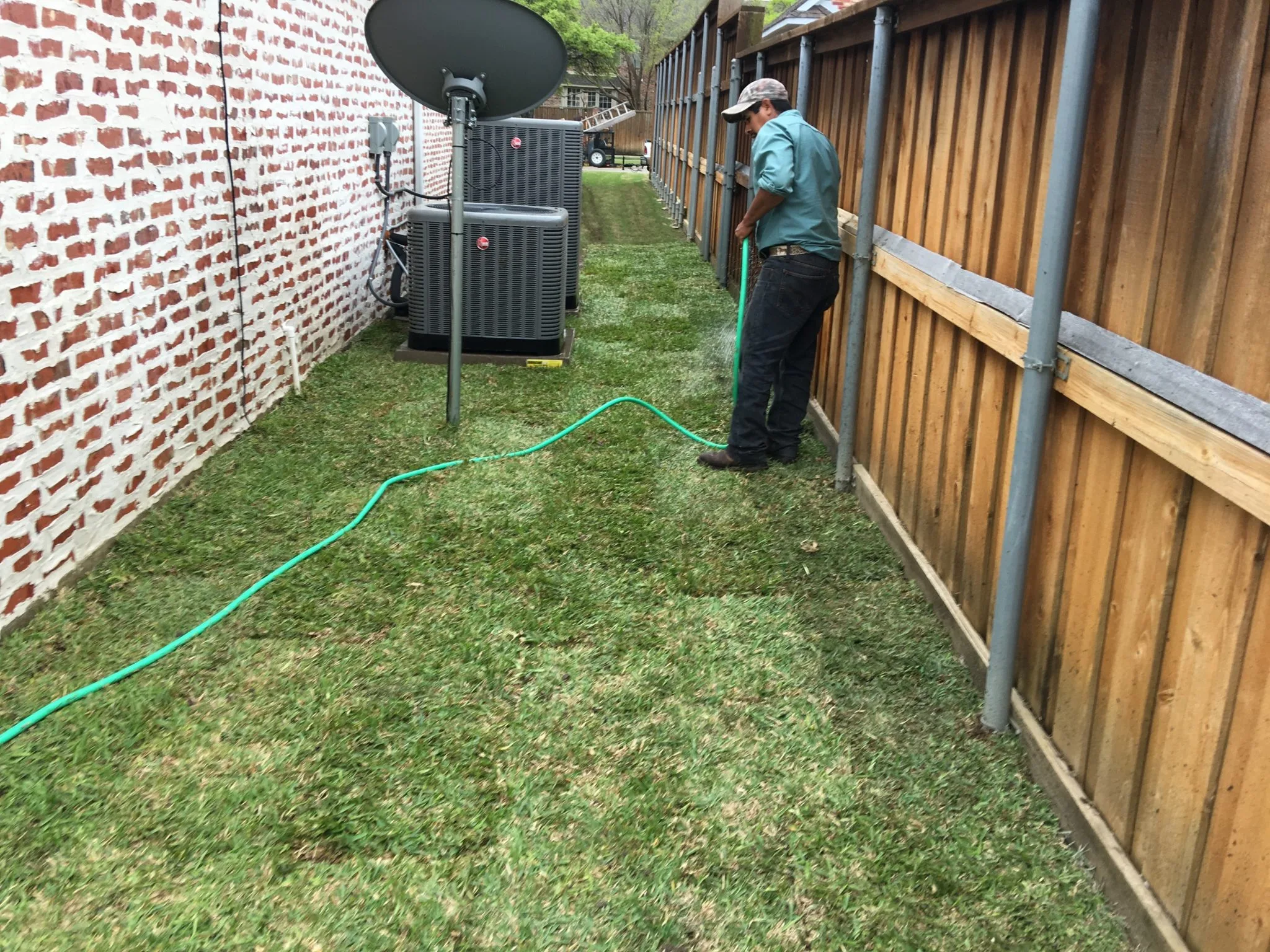Wherever you are in North Texas, chances are you’ve found yourself wondering how to maintain your turf so that it reaches its full potential. In our more than 30 years of maintaining lawns in Texas, we’ve learned a thing or two about turf, and while it might be tempting to assume that all grasses are the same, the truth is that there are some crucial differences from lawn to lawn that should be taken into account when figuring out a maintenance plan
In this post, we’ll take you through the three main grass types in North Texas, and explain the best ways to care for each variety. We’ll look at the role that fertilization, watering, and mowing play in proper lawn maintenance, and shed some light on the do’s and don’ts of Texas lawn care.



Types of Grass in North Texas
There are three main varieties of grass in Texas. They are popular for an array of reasons, the most important being that they thrive in our warm climate. Our turf experts can help determine the best type of grass for your property based on a few different characteristics. We evaluate soil type, watering, shade, and proximity to other plants that have the same nutrients. You can learn more about choosing the right type of grass for your lawn here.
Zoysia Grass
Zoysiagrass is one of the most diverse grasses, with over a dozen species that can be used to sew a lawn. The plant’s ability to stand up to heat, drought, and heavy foot traffic makes it a reliable choice for Texas turf. This hardy grass can deliver beautiful, dense lawns requiring very little maintenance.
St. Augustine
Its ability to withstand high temperatures and humidity means St. Augustine grass is one of the most popular lawn grass across Texas and the other Gulf states. Recognizable for its blue-green color and dense-growing pattern, it doesn’t take long to reap the benefits of a St Augustine turf.
Bermudagrass
Bermudagrass is extremely drought-tolerant, meaning it can tolerate long Texan summers with very little rainfall. Because it recovers from damage more quickly than most grass types, it is one of the most popular varieties for athletic fields and golf courses in states that see a lot of sunlight.
Watering Needs for Texas Grasses
Many homeowners assume that by turning on a sprinkler and letting it run for a while they are giving their lawn the care it needs to flourish. But as we mentioned earlier, not all sod is the same, and by taking a cookie-cutter approach to watering, you could be doing more harm than good. People often end up watering their grass too much or too little, resulting in lack-luster lawns that struggle to cope with the Texas climate.
Zoysia Grass Watering
On average, Zoysia grass needs around ½ – 1 inch of water each week. Watering deeply and infrequently encourages hardy, drought-resistant roots, while Zoysia grass growing in sandy soil might need more frequent watering.
St. Augustine Watering
In general, you should be looking to give your St Augustine lawn around ¾ inch of water twice a week. However, with St. Augustine you only want to water when the grass needs it and is showing signs of drought stress like dull color or folded leaves.
Bermudagrass Watering
You should aim to water your Bermudagrass lawn once a week with around 1 inch of water. As with Zoysia, if your Bermudagrass is growing in sandy soil then it might need watering every third day.
Fertilizing Needs According to Grass Type
What kind of grass you have will determine how and when you fertilize your lawn. Although all three varieties follow roughly the same schedule, they require different amounts at different intervals to grow strong and healthy. A soil test should always be performed on an annual basis to ensure your lawn’s specific needs are being met.
Zoysia Grass Fertilization
Zoysia grass thrives when the soil pH is between 5.8 and 7.0.2. On average, this variety of grass requires fertilizer four times a year, or about every six weeks, between April and October. Because Zoysia has lower nitrogen needs than many other types of grass, most times you will only need to apply fertilizer through spring and fall.
St. Augustine Fertilization
St. Augustine grass grows at its best in soil at a pH of 6 to 6.5. Late winter is an ideal time to give your St. Augustine lawn its first application of fertilizer, followed by a preemptive herbicide to catch weeds in spring or early summer. We also recommend a pre-winter fertilization to prepare your grass for early spring growth.
Bermudagrass Fertalization
Bermuda lawns need more fertilizer than any other type of grass in Texas. They thrive when given steady, regular fertilizer applications throughout the growing season, starting in mid-March and pausing for winter towards the end of Fall. The ideal soil pH for Bermudagrass is between 5.8 and 7.
Texas Lawn Mowing Needs
Keeping turfgrasses mowed is essential to keeping them healthy. By mowing frequently, you can encourage turfgrass to grow laterally, and improve thickness. Regular mowing also protects against pests and weeds. Keep in mind the rule of ? for mowing. You never want to cut more than ? of the grass at a time.
Zoysia Grass Mowing
Bermudagrass lawns should be mowed to a height of around 1 to 2 inches, which requires weekly mows during the growing season. Your grass should never be allowed to grow taller than around 3 inches, otherwise, you risk “scalping” your lawn when cutting from 3 inches down to below 2 inches. This removes too much of the green portion of the blades, leaving your lawn unhealthy and unsightly.
St. Augustine Mowing
St. Augustine lawns should be mowed to a height of around 2.5? to 3.5?. Mowing frequency will fluctuate depending on rainfall, but you can normally expect to mow about once a week.
Bermudagrass Mowing
The ideal length for Bermudagrass lawns will depend on the variety in your yard. In the spring you should mow common Bermuda Grass to around 2 inches, and hybrid Bermudagrass about 1.5 inches. As with St.Augustine grass, Bermuda lawns are sensitive to being mowed too short or left to grow too long, so you should ensure you commit to regular weekly maintenance to keep your turf healthy.

Few things can enhance your yard more dramatically than a soft, green, healthy lawn. It’s the number one thing that people notice about a yard, and in addition to improving the overall look of your home, a well-maintained lawn can increase the potential value of your property.
College Fund Landscaping can help! Request a free online quote on our website or by using Facebook Messenger.



Comments (0)
Thanks for your comment!
Thanks for your feedback! Your comments have been successfully submitted! Please note, all comments require admin approval prior to display.
Error submitting comment!
There is a problem with your comment, please see below and try again.